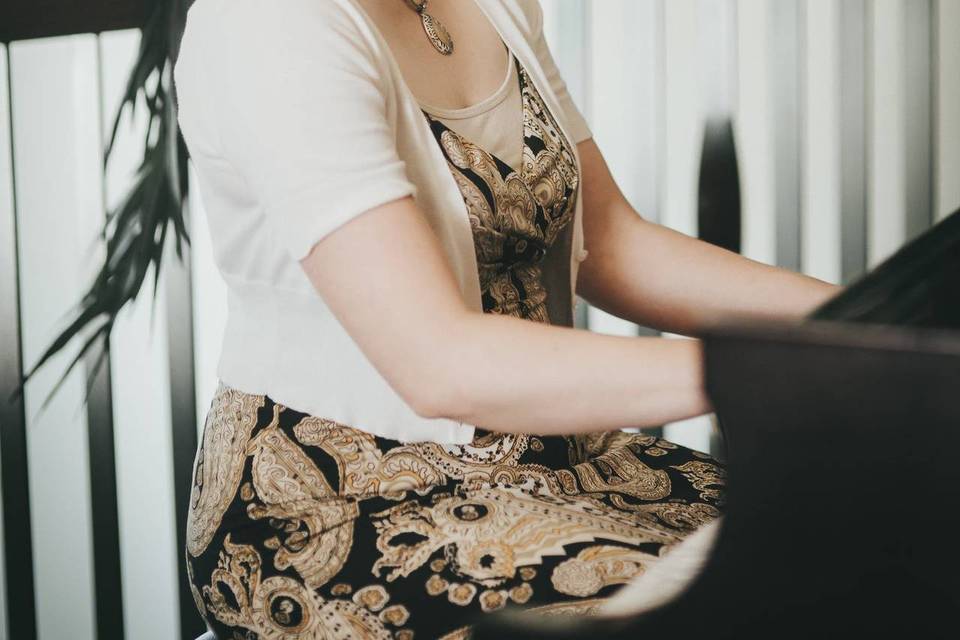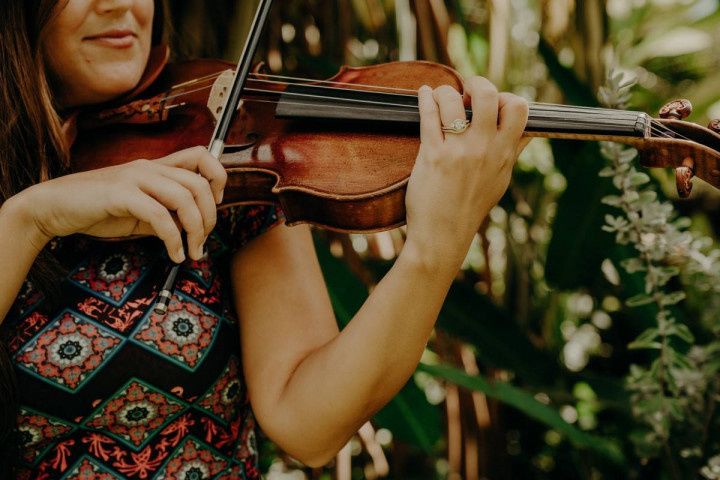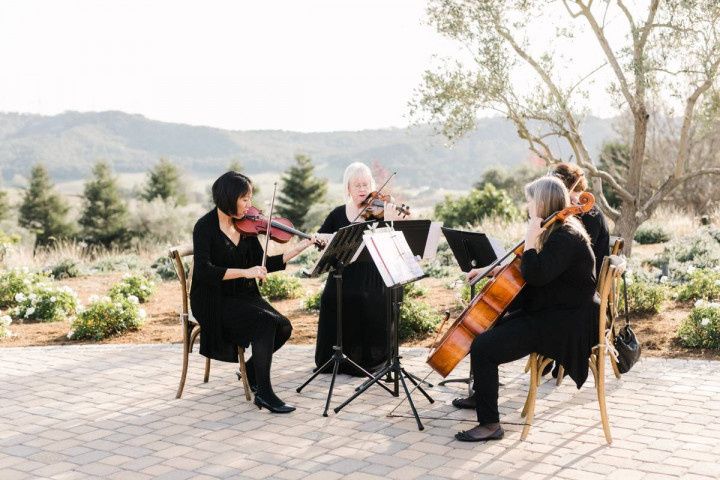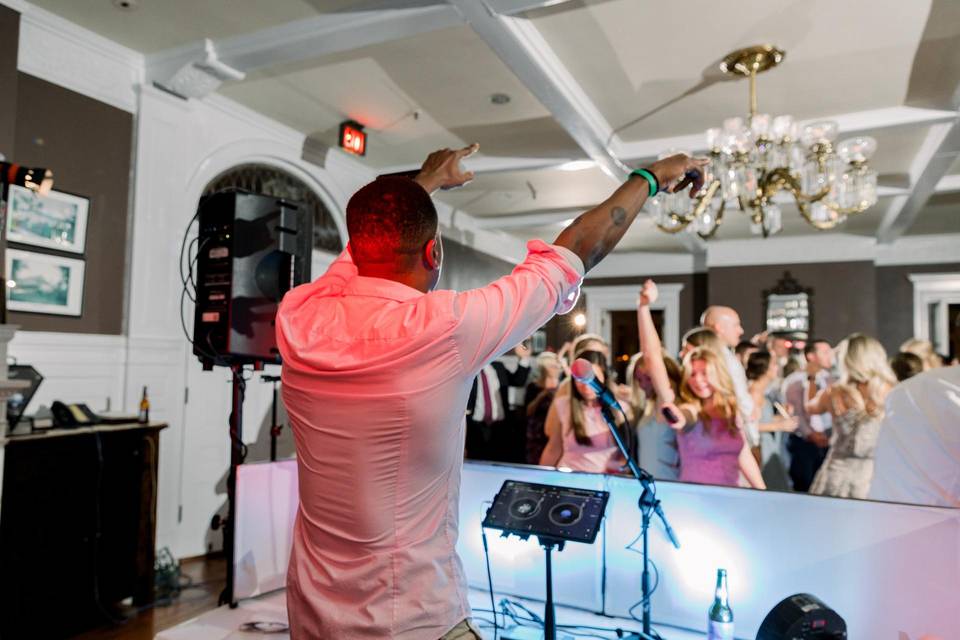Perfect Jewish Wedding Music for Every Ceremony Moment
With so much Jewish wedding music to choose from, it can be hard to figure out which songs to play during your ceremony. Here are a few of our favorites.
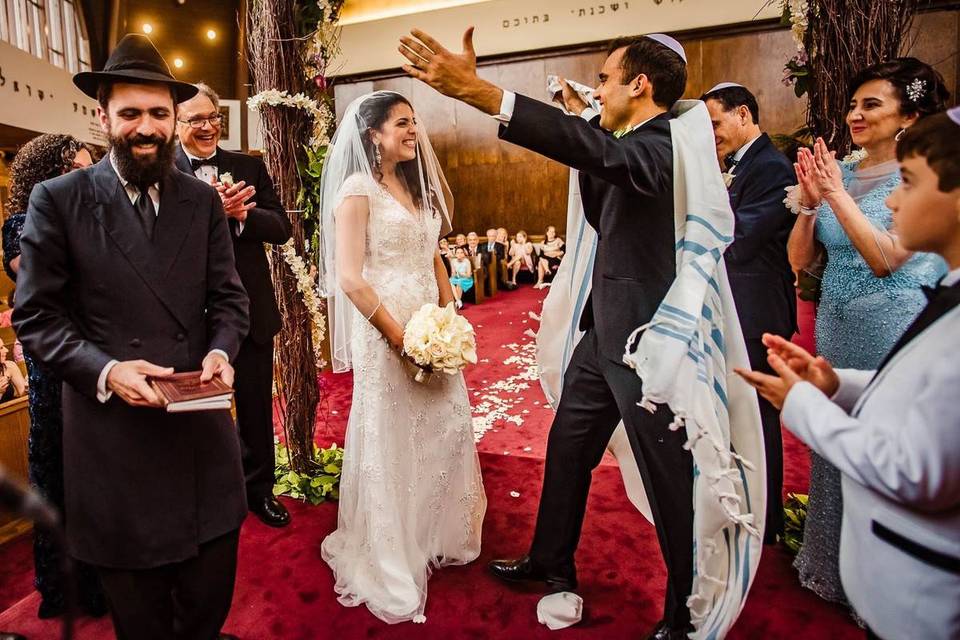
A Jewish wedding ceremony is an emotional and joyful event. Depending on your level of orthodoxy, you may or may not be able to personalize the religious ceremony a great deal, but you might be able to choose the Jewish wedding music for important moments during the proceedings. Whether you’re looking for a sentimental and traditional tune or music that’s more upbeat and joyful, there are plenty of Jewish wedding songs to choose from.
Here are our favorite examples of Jewish wedding music for every part of your ceremony.
Dodi Li
The phrase “I am my beloved and my beloved is mine” is often heard in a Jewish ceremony, and this song features those lyrics. Whether you prefer a sung version or an instrumental (as played above by David & The High Spirit), this Jewish wedding music is popular for processionals.
L’Cha Dodi
You’re probably already familiar with this hymn, which is played on Friday night as Shabbat begins. The lyrics “Come, my Beloved, to meet the Bride…” are also meaningful for a wedding. These poignant lyrics can be sung to a variety of tunes, but we love this modern version, which uses first-dance favorite John Legend’s “All of Me” as a backdrop.
Erev Shel Shoshanim
One of the most popular Hebrew love songs, this tune is often played during wedding processionals or interludes during Jewish ceremonies. Translated to “Evening of Roses,” this Jewish wedding music features lyrics that are quite poetic so if you’re able to have a vocalist perform them, all the better.
Oseh Shalom
Depending on the format of your ceremony, this prayer for peace may be played at various points during your wedding. Since it is commonly sung at religious events, your guests will likely be asked to sing along, creating a moment that your loved ones can share together.
Y’did Nefesh
This Jewish wedding music is particularly popular as a prelude song. Frequently sung during the Sabbath, the lyrics also hold meaning at a wedding. This song works particularly well as an instrumental.
Mi Bon Siach
This song is often played during the circling portion of the processional, as the bride enters the chuppah. The lyrics are translated to “The One Who knows the speech of a rose among thorns/the love of a bride and the joy of lovers/He will bless the groom and the bride” and are quite appropriate as Jewish wedding music.
Yerushalayim Shel Zahav
This Israeli song, translated to “Jerusalem of Gold” is frequently heard at Jewish weddings, as a celebration of Israel. It’s certainly a more modern song (it was written in 1967), but is still appropriate during a processional or as an interlude.
“Sunrise, Sunset” from Fiddler on the Roof
While this song isn’t traditional Jewish wedding music, it is frequently heard at Jewish weddings (see the wedding scene in Sex and the City 2). It might not be appropriate to play this song if you’re hosting your wedding at a synagogue, but if you’re hosting your wedding elsewhere, it may be an option. If you are fortunate enough to have your grandparents attending your wedding, this is a lovely tune to play (either sung or instrumental) as they are escorted down the aisle.
Siman Tov U’Mazal Tov
After the glass has been broken and you’ve shared your first kiss as a married couple, your guests will be ready to celebrate! And there is perhaps no more celebratory Jewish wedding music than this song, which is the most popular recessional song played during Jewish weddings. As your guests shower you with love, they’ll clap and sing along to this traditional favorite. They’ll probably also hear this song again during the hora.
Od Yishama
Another celebratory favorite that you may hear as an upbeat postlude song, and then again during the hora. With lyrics like “The voice of joy and the voice of gladness/The voice of the bridegroom and voice of the bride,” it’s easy to see why.

